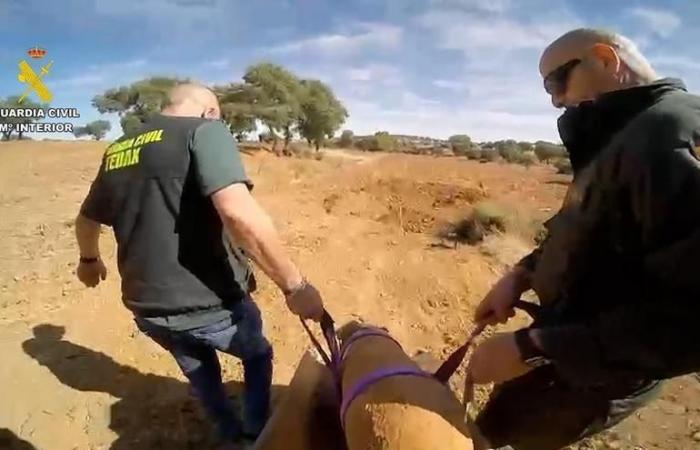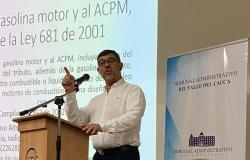
A resident of Hinojosa finds an aviation bomb from the Civil War in the fieldCORDOVA
The Seville Command’s Explosive Ordnance Deactivation Team has deactivated a aerobomb of the Civil war found in the Cordoba town of Hinojosa del Duque.
According to Benemérita, on June 10, a neighbor of the town, who was carrying out the tasks of the field, warning of the location of what appeared to be a bomb. Immediately, the Command of the Civil Guard of Córdoba requested the support of the Gedex (Group of Specialists in Deactivation of Explosive Devices and CBRN Nature) of the Seville Command, in order for an Edex to travel (Explosive Ordnance Disposal Team) to the farm where the artifact had been located.
35 kilos of TNT explosive and ready for detonation
An Edex team traveled to the place where the device was located, where they verified that it was an aviation bomb, one of those used in the last Spanish Civil War, 70 kilos of weightwhich is missing its fins, and which contained 35 kilos of TNT explosiveas well as, with the activation fuze mounted, that is, ready for detonationwhich made handling it extremely dangerous.
According to the Civil Guard, it is the first time that a bomb of this type has been found in Córdoba in such good condition after more than 80 years.
An agent from the Civil Guard’s Explosive Ordnance Disposal Team next to the bomb found in Hinojosa del Duque.
Detonation safety device
Due to the real danger that this type of explosives entails, specialists decide to adopt the safety and protection measures necessary for your deactivation on siterequesting an excavator to make a trench in the designated land, about two meters deep, with an entrance ramp.
To help with the controlled detonation, an Infoca checkpoint also collaborated, which was in charge of carrying out work to moisten the nearby terrain, as well as prevent possible fire outbreaks that could occur.
A ambulance with a doctor, a nurse and a technician. A Civil Guard Traffic Patrol blocked traffic on a nearby road and a Citizen Security patrol, together with the Civil Guard post commander, as head, completed the device.
The Civil Guard thanks, through the press release where it reports everything that happened, “the invaluable collaboration of the Hinojosa del Duque City Councilto carry out the deactivation with maximum safety, which was a complete success, thanks to the excellent coordination of all the personnel involved.”
Bombs are not collectibles
The Civil Guard reiterates, once again, that these types of artifacts are not collector’s items, their trade or possession having been prohibited. If anyone finds an artifact of this type (aircraft bomb/projectile/grenade…), they must refrain from handling it and quickly notify 062, so that Tedax (Technicians Specialists in Deactivation of Explosive Artifacts and of a Nuclear, Radiological, Biological and Chemistry), take charge of the intervention, since these technicians have the necessary knowledge and training, the result of the experience acquired over the years.
It must be taken into account that these artifacts They usually have all their elements, including their explosive charge intact, being in a position to be activated at any time, despite the time elapsed.
The Civil Guard recommends, if you find any explosive device, don’t touch itmark or mark the place where it is located, notify 062, and while the agents arrive, prevent other people from accessing the place and manipulating it.
What should never be done, Benemérita insists, is to collect the artifact and move it to another place, and even less so, to homes or closed spaces, where a burst could produce a real catastrophe.





